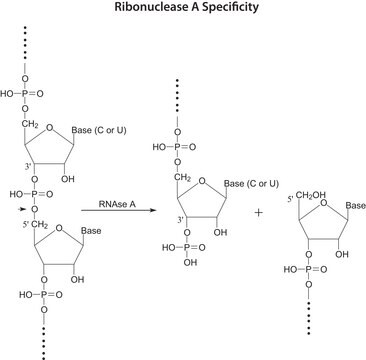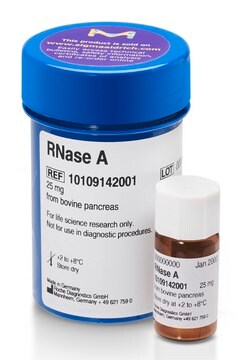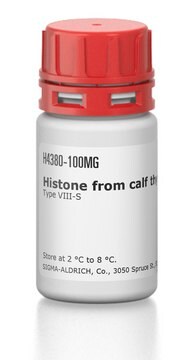R125
Anti-RANTES antibody produced in goat
affinity isolated antibody, lyophilized powder
Sign Into View Organizational & Contract Pricing
All Photos(1)
About This Item
conjugate:
unconjugated
application:
IHC (f)
Neutral
WB
Neutral
WB
clone:
polyclonal
species reactivity:
human
citations:
8
technique(s):
immunohistochemistry (frozen sections): suitable
neutralization: suitable
western blot: suitable
neutralization: suitable
western blot: suitable
Recommended Products
biological source
goat
Quality Level
conjugate
unconjugated
antibody form
affinity isolated antibody
antibody product type
primary antibodies
clone
polyclonal
form
lyophilized powder
species reactivity
human
technique(s)
immunohistochemistry (frozen sections): suitable
neutralization: suitable
western blot: suitable
UniProt accession no.
storage temp.
−20°C
target post-translational modification
unmodified
Gene Information
human ... CCL5(6352)
Related Categories
General description
RANTES (Regulated upon Activation, Normal T cell Expressed and Secreted; CCL5) is a chemokine that brings T cells, monocytes, eosinophils, NK cells, dendritic cells and mast cells to the site of infection or inflammation. RANTES has an unusual kinetic profile and is secreted 3-5 days after the activation of the T cells. It also exhibits antimicrobial activity by inducing the production of nitric oxide in macrophages. The main function of RANTES is mediated by CCR5, CCR1, CCR3 and other receptors. The expression of RANTES is regulated mainly by JAK/STAT and NF-κB pathways. Polymorphisms in the gene encoding RANTES are implicated in artherosclerosis, multiple sclerosis, HIV infection, diabetes, inflammatory diseases of the lung, renal disease and systemic lupus erythematosus. In addition, RANTES is a potential prognostic factor to track the progression of stage II breast cancer
Anti-RANTES antibody specifically recognizes human RANTES. The antibody shows ~40% cross-reactivity with mouse RANTES and canine RANTES, ~20% cross-reactivity with cotton rat RANTES, and ~1% cross-reactivity with feline RANTES.
Anti-RANTES antibody specifically recognizes human RANTES. The antibody shows ~40% cross-reactivity with mouse RANTES and canine RANTES, ~20% cross-reactivity with cotton rat RANTES, and ~1% cross-reactivity with feline RANTES.
Specificity
Based on ELISA, the antibody shows ~40% cross-reactivity with recombinant mouse RANTES, ~20% cross-reactivity with recombinant cotton rat RANTES, and ~1% cross-reactivity with recombinant feline RANTES.
Immunogen
recombinant human RANTES expressed in E. coli.
Application
Anti-RANTES antibody may be used for immunoblotting at a working concentration of 0.1 μg/ml. For immunohistochemistry and immunofluorescence, a working concentration of 5-15 μg/ml may be used. The antibody is suitable for neutralization reactions (ND50 is 0.1-0.4 μg/ml).
Physical form
Lyophilized from a 0.2 μm filtered solution in phosphate buffered saline with 5% trehalose.
Disclaimer
Unless otherwise stated in our catalog or other company documentation accompanying the product(s), our products are intended for research use only and are not to be used for any other purpose, which includes but is not limited to, unauthorized commercial uses, in vitro diagnostic uses, ex vivo or in vivo therapeutic uses or any type of consumption or application to humans or animals.
Not finding the right product?
Try our Product Selector Tool.
Storage Class
11 - Combustible Solids
wgk_germany
WGK 3
flash_point_f
Not applicable
flash_point_c
Not applicable
ppe
Eyeshields, Gloves, type N95 (US)
Choose from one of the most recent versions:
Already Own This Product?
Find documentation for the products that you have recently purchased in the Document Library.
Neora Yaal-Hahoshen et al.
Clinical cancer research : an official journal of the American Association for Cancer Research, 12(15), 4474-4480 (2006-08-11)
The aim of this study was to determine the prognostic value of the chemokine CCL5, considered as a promalignancy factor in breast cancer, in predicting breast cancer progression and to evaluate its ability to strengthen the prognostic significance of other
Caitlin M Guenther et al.
Molecular therapy : the journal of the American Society of Gene Therapy, 27(3), 611-622 (2019-02-18)
Adeno-associated virus (AAV) has emerged as a promising gene delivery vector because of its non-pathogenicity, simple structure and genome, and low immunogenicity compared to other viruses. However, its adoption as a safe and effective delivery vector for certain diseases relies
L Björk et al.
Journal of immunological methods, 175(2), 201-213 (1994-10-14)
A quantitative image analysis technique was developed to assess the cytokine content of immunocytochemically stained cytokine producing cells. Peripheral blood mononuclear cells were stimulated to induce cytokine production with the superantigen streptococcal pyrogenic exotoxin-A. We have developed a method based
Polymorphisms in CCL2&CCL5 chemokines/chemokine receptors genes and their association with diseases.
Zdenka Navratilova
Biomedical papers of the Medical Faculty of the University Palacky, Olomouc, Czechoslovakia, 150(2), 191-204 (2007-04-12)
Chemokines and chemokine receptors are major mediators of leukocyte trafficking into the sites of the immune response. They participate in defence against microbial infection, in Th1/Th2 polarization of the immune response, allograft rejection and angiogenesis/angiostasis as well as in tumorigenesis
F Villalta et al.
Infection and immunity, 66(10), 4690-4695 (1998-09-24)
This paper describes a new role for the cysteine-cysteine (CC) chemokines RANTES, MIP-1alpha, and MIP-1beta on human macrophage function, which is the induction of nitric oxide (NO)-mediated trypanocidal activity. In a previous report, we showed that RANTES, MIP-1alpha and MIP-1beta
Our team of scientists has experience in all areas of research including Life Science, Material Science, Chemical Synthesis, Chromatography, Analytical and many others.
Contact Technical Service






